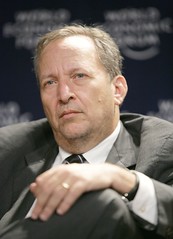 If you’re an election geek like us, you’ll have seen this electoral map from the NYT. It shows which counties in the US actually shifted toward McCain, in comparison with how they voted in 2004. (The map showing which counties shifted by how much to Obama is interesting too.)
If you’re an election geek like us, you’ll have seen this electoral map from the NYT. It shows which counties in the US actually shifted toward McCain, in comparison with how they voted in 2004. (The map showing which counties shifted by how much to Obama is interesting too.)
Since the country as a whole saw a 9% swing to the Democrat, it’s just a small part of the country that moved toward McCain, obviously. Just 22% of counties, as the Times helpfully notes. But their geographical concentration is noteworthy, as apart from obvious bits in Arizona and Alaska, the candidates’ home states, most of the counties in question form a perfect arc in the Highland South, from Oklahoma eastwards to Tennessee and then upwards through the Appalachians.
Striking as the pattern is, however, it’s become fodder for some misinterpretation as it did the rounds on the blogs. Some of it may just be a matter of emphasis. Some of it, however, has to do with the way the differing racial demographic balances in red states cloak the true concentration of McCain switch voters.
In terms of general emphasis, I’d be a bit wary about impressions when these counties become dubbed “the McCain belt” — you’d almost think that these were the best counties for McCain, rather than just the ones that moved toward him most. For example, McCain won Alabama and Louisiana by about 20 points, a more ample margin than he got in Tennessee, Kentucky or West-Virginia. So what’s the real McCain Belt?
The more interesting point is about race. The NYT map showing the electoral shifts to McCain obviously does not take into account the role of race, it just maps the overall results. One thing, however, that distinguishes the Appalachians is that they have a very small black population. In the Deep South, on the other hand, you have some of the largest black minorities around. Those black populations turned out en masse for Obama — and so their extra votes for Obama effectively canceled out the shift to McCain among whites there.
Do Southern whites constitute the real McCain Belt?
Compare the Electoral Shifts map above, with its “McCain belt” stretching from the Oklahoma to the Appalachians, with this one:

How has the white vote shifted between 2004 and 2008? In this map, McCain getting 25% more of the white vote in a state than Bush got in '04 would colour the state a fiery red; McCain getting 25% less would make it the coolest blue. The map shows that whites in much of the Deep South swung to McCain, while whites in the Mountain and Pacific West, the Midwest and the Atlantic South swung strongly to Obama.
This map shows, state by state, how much the white vote, taken separately, changed since 2004. It looks very different, doesn’t it?
Continue Reading »







